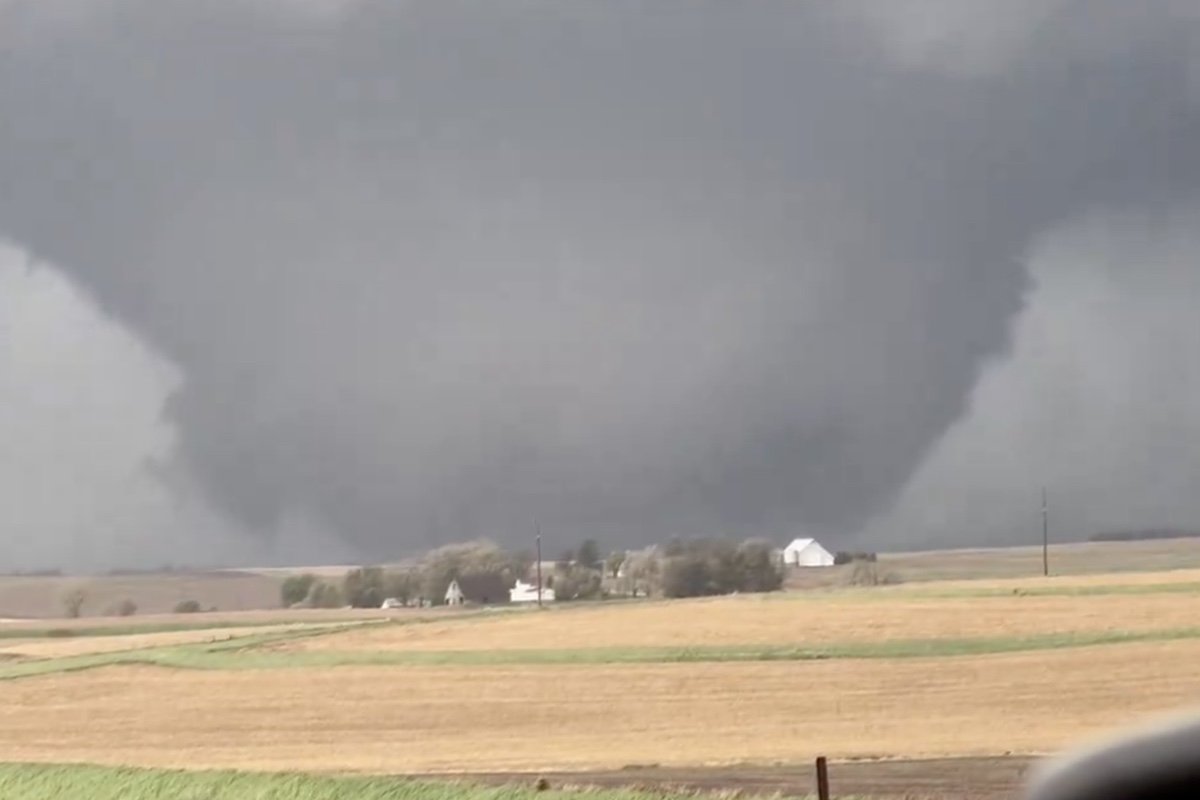
Tornadoes in Nebraska today pose a significant threat to communities across the state. With their unpredictable nature and devastating impact, understanding the risks and taking appropriate safety measures is crucial. This comprehensive guide delves into the history, climatology, forecasting, and preparedness aspects of tornadoes in Nebraska, providing invaluable information to keep you informed and protected.
Tornado History in Nebraska: Tornadoes In Nebraska Today
Nebraska has a long and destructive history with tornadoes. The state is located in the central United States, which is known as Tornado Alley, a region that experiences a high frequency of tornadoes each year. Nebraska has experienced some of the most powerful and devastating tornadoes in U.S.
history.
The earliest recorded tornado in Nebraska occurred in 1858. Since then, the state has been hit by numerous tornadoes, including the Omaha tornado of 1913, which killed 102 people and destroyed much of the city. In 1975, the Beatrice tornado killed six people and injured 100. And in 2019, the Pilger tornado killed one person and injured 19.
Most Notable Tornadoes in Nebraska History
| Date | Location | Damage |
|---|---|---|
| May 3, 1913 | Omaha | 102 deaths, $1 million in damage |
| June 1, 1975 | Beatrice | 6 deaths, $100 million in damage |
| June 16, 2019 | Pilger | 1 death, $19 million in damage |
Tornado Climatology in Nebraska
Nebraska’s tornado climatology is influenced by several factors, including its geography, weather patterns, and atmospheric conditions.
Nebraska is located in the central United States, which is a region known for its severe weather. The state is also located in the middle of Tornado Alley, a region that experiences a high frequency of tornadoes each year. Nebraska’s climate is characterized by hot, humid summers and cold, dry winters.
The state also experiences frequent thunderstorms, which can produce tornadoes.
Tornado Risk in Nebraska
The risk of tornadoes in Nebraska varies depending on the location and time of year. The state’s highest risk for tornadoes is during the spring and summer months, when the weather is warm and humid. The eastern part of the state is at a higher risk for tornadoes than the western part.
This is because the eastern part of the state is located in Tornado Alley.
Tornadoes can occur at any time of day or night, but they are most common in the afternoon and evening hours. The average number of tornadoes in Nebraska each year is 55.
Tornado Forecasting and Warning Systems in Nebraska

The National Weather Service (NWS) is responsible for forecasting and warning the public about tornadoes in Nebraska. The NWS has a network of weather stations and radars that are used to track tornadoes. The NWS also issues tornado warnings when a tornado is imminent or already occurring.
The NWS uses a variety of methods to forecast tornadoes, including:
- Observing the weather conditions
- Using computer models
- Tracking the movement of tornadoes
The NWS issues tornado warnings when there is a threat of a tornado. Tornado warnings are issued for specific counties or areas. The NWS also provides information on how to stay safe during a tornado.
Challenges and Limitations of Tornado Forecasting and Warning, Tornadoes in nebraska today
There are a number of challenges and limitations to tornado forecasting and warning. These challenges include:
- Tornadoes can be difficult to detect, especially in the early stages of development.
- Tornadoes can change direction and speed quickly, making it difficult to predict their path.
- Tornadoes can occur in areas that are not expecting them.
Despite these challenges, the NWS has made significant progress in tornado forecasting and warning. The NWS now issues more accurate and timely tornado warnings than ever before.
Epilogue
In conclusion, tornadoes in Nebraska today demand our attention and preparedness. By understanding the risks, staying informed through reliable forecasting systems, and implementing effective safety measures, we can mitigate the impact of these powerful storms and safeguard our communities.
User Queries
What are the most common types of tornadoes in Nebraska?
Supercell tornadoes are the most common type, characterized by their rotating updraft and often producing large hail and heavy rain.
How can I stay informed about tornado warnings?
NOAA Weather Radio, local news stations, and mobile weather apps provide real-time tornado warnings and updates.
What should I do if I encounter a tornado?
Seek immediate shelter in a sturdy building, basement, or underground structure. Stay away from windows and exterior walls.





